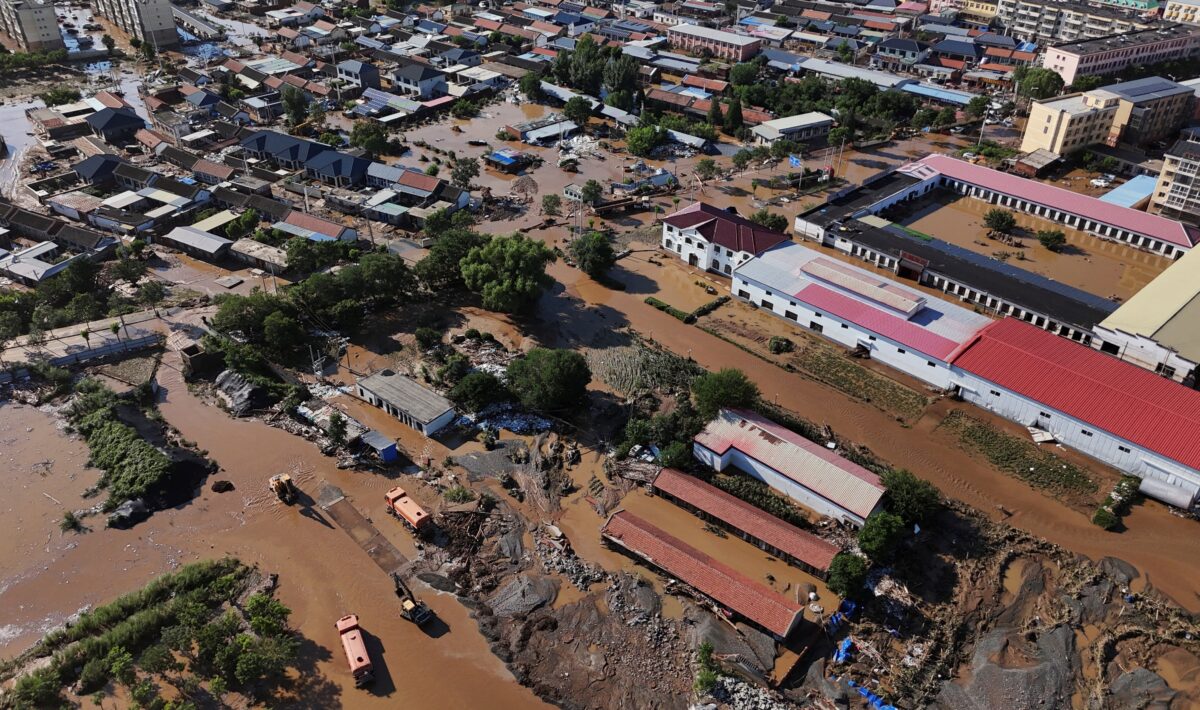From Mauritius to Sudan, You Told Us Where To Look. Here Are the Results
Satellite imagery is increasingly used by open source researchers to analyse conflict,natural disasters, mining activities and even construction work.
With the help of Planet Labs PBC and Umbra Space, Bellingcat can take a snapshot of anywhere in the world by “tasking” their satellites to take an image at up to 25-centimetre resolution.
Bellingcat asked you, our community, about the locations where you wanted to see high-resolution satellite imagery.
A Growing Airbase in Mauritius
On LinkedIn, Bellingcat follower Muhammad Mamoom suggested imaging the Indian Air Force base on Agaléga, an island of Mauritius.
Agaléga is a small island of only 330 residents in the Indian Ocean. A dependency of Mauritius, it is more than 1,100 km away from the main island. Although only 25 square kilometres, Agaléga is in a strategic geopolitical position to control choke points of the Indian Ocean.
A 2015 memorandum of understanding between Mauritius and the Indian Armed Forces set the stage for the development of an Indian Air Force base on the island. In response to a 2021 Al Jazeera investigation, the government of Mauritius claimed that there is “no agreement between Mauritius and India to set up a military base in Agaléga,” despite evidence of Indian ships ferrying construction supplies to the small island, and the large new runway clearly visible on satellite imagery.
There is local opposition to the construction, and many Mauritians see it as a legacy of colonialism. Between 1968 and 1973 hundreds of local residents were deported from the island of Diego Garcia to make way for a joint British-American military base.
Over the past four years, the development of the airbase on Agaléga has been highly visible on satellite imagery. The timelapse below, courtesy of Planet Labs PBC, shows this expansion. Particularly notable is the large runway that stretches almost half the length of the island.
Timelapse of development on Agaléga from February 2019 to September 2024. Imagery from Planet Labs PBC PlanetScope satellite.
In the high-resolution image captured on August 30, 2024 by Planet Labs PBC, we can also see recently completed buildings and newly paved roads, as well as continued clearance of the vegetation surrounding the airbase.
Mauritius is a global biodiversity hotspot, home to many endemic plants and animals. The Agaléga island day gecko is found nowhere else. The island is also known for being the site of the last sighting of a dodo, perhaps the world’s most famous extinct animal.
SkySat imagery captured on August 30, 2024, by Planet Labs PBC.
Demolition and Construction in Nagorno-Karabakh
Bellingcat recently published an investigation detailing the demolition of buildings and hundreds of incidents of what appears to be ransacking across the city of Khankendi, known as Stepanakert to Armenians.
The regional capital of Nagorno-Karabakh — internationally recognised as part of Azerbaijan — was also a top requested location by the Bellingcat community. In addition to the investigation, we are publishing more recent satellite imagery of Khankendi/Stepanakert and the second largest town in Nagorno-Karabakh, Aghdere, known in Armenian as Martakert.
In Khankendi/Stepanakert, the demolition of buildings surrounding Qarabag University, the former Artsakh State University, is clearly visible, as is the demolition of the former National Assembly building. Additionally, the image shows the construction of a new highway between Khankendi and Lachin via Shusha, a historic mountain town to the south of Khankendi.
SkySat imagery captured on August 24, 2024, by Planet Labs PBC.
Fewer changes to the city of Aghdere/Martarkert are visible. To the southwest of the city, the construction of a pipeline built to “support the reconstruction works in the area by strengthening the gas supply of the region” is visible. There appears to be cleared land adjacent to the highway going south towards the city of Aghdam, where Azerbaijan is building a new highway. These projects underscore the intensity with which Azerbaijan is integrating newly controlled areas into its national infrastructure.
The Demirli Copper-Molybdenum mine can also be seen in the bottom left of the image. In recent years, this mine has been environmentally and politically controversial.
SkySat imagery captured on August 30, 2024, by Planet Labs PBC.
Sennar and Al Fashir in Sudan
In recent months, fighting between the Rapid Support Forces (RSF) and Sudanese Armed Forces (SAF) has intensified in Sennar State in Sudan’s southeast. Initially a paramilitary force controlled by a faction of the Sudanese government, the Sudanese Armed Forces designated the RSF a rebel group after RSF attacks on government sites in April last year. Since then, the two forces have battled for control of the country.
@opalrose on Bellingcat’s public Discord server requested a tasking of the state capital city of Sennar.
In Planet Labs PBC SkySat imagery captured on August 31, the most noticeable features are agricultural flooding, a result of the unusually heavy rains that also caused a dam collapse in northwest Sudan.
North of Sennar City, what appears to be a checkpoint can be seen on Sennar Bridge.
SkySat imagery captured on August 31, 2024, by Planet Labs PBC.
Al Fashir is the largest city in the Darfur region and the last stronghold of the Sudanese Army in Darfur. Bellingcat previously reported on the fighting between the RSF and SAF and attacks on hospitals and the power station. Agricultural and urban flooding is also visible in the city, including around the market and residential areas of the Abou Shouk internally displaced refugee camp, an area where civilians have been targeted by the Rapid Support Forces.
SkySat imagery captured on September 5, 2024, by Planet Labs PBC.
While the satellite tasking captured the majority of the city, the northeastern part of Al Fashir is absent, where the Rapid Support Forces are keeping the city under siege and where civilians are heavily impacted.
Expansion of Mines and Refugee Camps in DRC
In eastern Democratic Republic of the Congo, the armed conflict between the March 23 (M23) Movement and the Congolese Armed Forces, as well as other combatant groups, has caused a large-scale displacement crisis. This is visible in the imagery of the refugee camps near Goma, the capital of North Kivu state, requested by a Bellingcat follower on X.
Satellite imagery also shows that these camps have grown significantly in size since the latest offensive began in March 2022.
SkySat imagery captured on August 27, 2024, by Planet Labs PBC.
There are also additional camps to the west that are not visible in this satellite image.
Earlier this year, the nearby mining town of Rubaya was seized by M23 rebels, to control its supply of coltan. Coltan is used to produce tantalum, a key ingredient in components in modern electronic devices, particularly smartphones. The Rubaya mines generate approximately 15% of the world’s supply of tantalum, and have become an important financing source for the combatant group, netting $300,000 monthly according to the UN.
Imagery requested on Bellingcat’s Discord server and captured by SkySat on August 24, 2024, shows the mines and the mining communities that have formed around them. Since the last high resolution SkySat images in April, growth and continued exploitation of the site are visible.
SkySat imagery captured on August 24, 2024, by Planet Labs PBC.
Kwan-li-so 25 in North Korea
North Korea operates detention and labour camps, known as kwan-li-so or kwalliso, for political prisoners of the totalitarian state. One such prison is Kwan-li-so 25, which underwent significant expansion from 2010-2013, and is believed to still be operating. The satellite imagery was requested by Bellingcat follower @pharisee.bsky.social on Bluesky.
SkySat imagery captured on August 28, 2024, by Planet Labs PBC.
Synthetic Aperture Radar: Myanmar and Syria
Visible light satellite imagery, which we have featured above, is only one type of remote sensing. Planet’s satellites also capture non-visual infrared wavelengths of light, and other satellites like Sentinel-2 see an even broader range. These wavelengths can reveal characteristics beyond what can be seen in visual light, such as vegetation health and soil properties.
Another important type of remote sensing is synthetic aperture radar, or SAR imagery. Instead of capturing sunlight reflecting off of the earth, SAR satellites bounce radio waves off of the earth and listen for the reflection. These black and white images look very different from visible light images, and while less intuitive to interpret, they have some significant advantages, such as the ability to capture images at night and under cloud cover. Thanks to a partnership with Umbra Space, Bellingcat also tasked Umbra SAR satellites at the request of two community members.
A Bellingcat follower on X requested an image of the Myanmar border region of Homalin, where, according to locals, illegal gold mining has expanded in scope since the outbreak of the Myanmar civil war in 2021. SAR imagery is especially suited to this cloudy tropical region. The small pits dug by artisanal miners fill with water, and are easily visible in SAR imagery as flat black areas, in contrast to the textured rainforest that surrounds them.
SAR image captured on August 27, 2024 by Umbra Space.
The Al Hawl refugee/detention camp in northeast Syria was requested by an anonymous member of Bellingcat’s community. There are many women and children in the camp, especially the family of ISIS fighters. Many are foreign nationals, but their jihadist ties make repatriation difficult. While ostensibly under the control of the Syrian Democratic Forces, a Kurdish-led coalition that controls north-eastern Syria, ISIS cells continue to operate, recruit members, and brutally enforce their control within the camp. In recent years diseases such as typhoid and tuberculosis have worsened the humanitarian situation.
The SAR image tasked by Bellingcat and captured by Umbra Space clearly shows the extent of the camp. In the southeast corner of the camp, the clearance of several of the camp annexes since early 2024 is visible, as well as the construction of a new annex of the camp since late 2023.
SAR image capture on August 21, 2024 by Umbra Space.
Additional research by Tristan Lee.
Bellingcat is a non-profit and the ability to carry out our work is dependent on the kind support of individual donors. If you would like to support our work, you can do so here. You can also subscribe to our Patreon channel here. Subscribe to our Newsletter and follow us on Instagram here, X here and Mastodon here.


